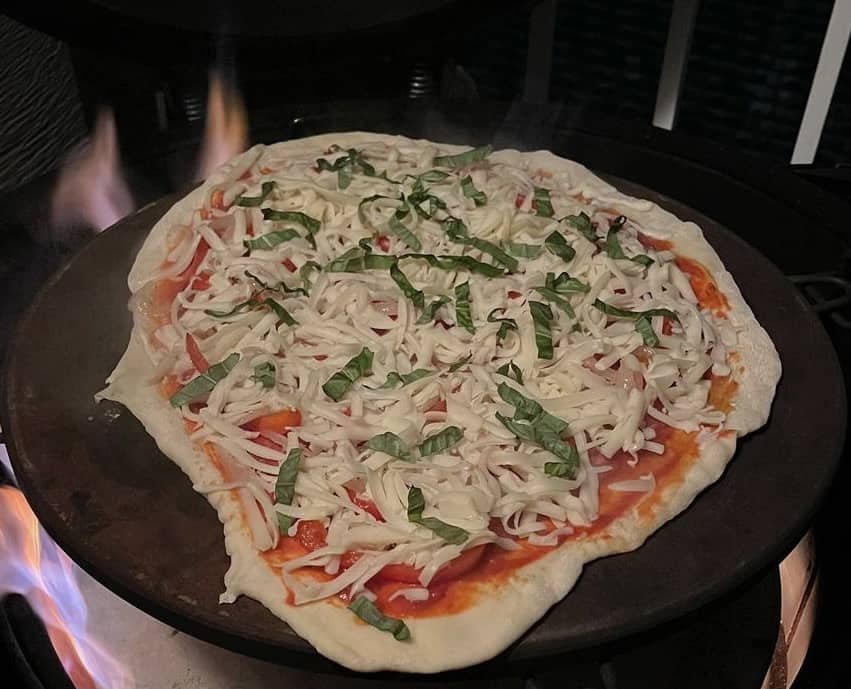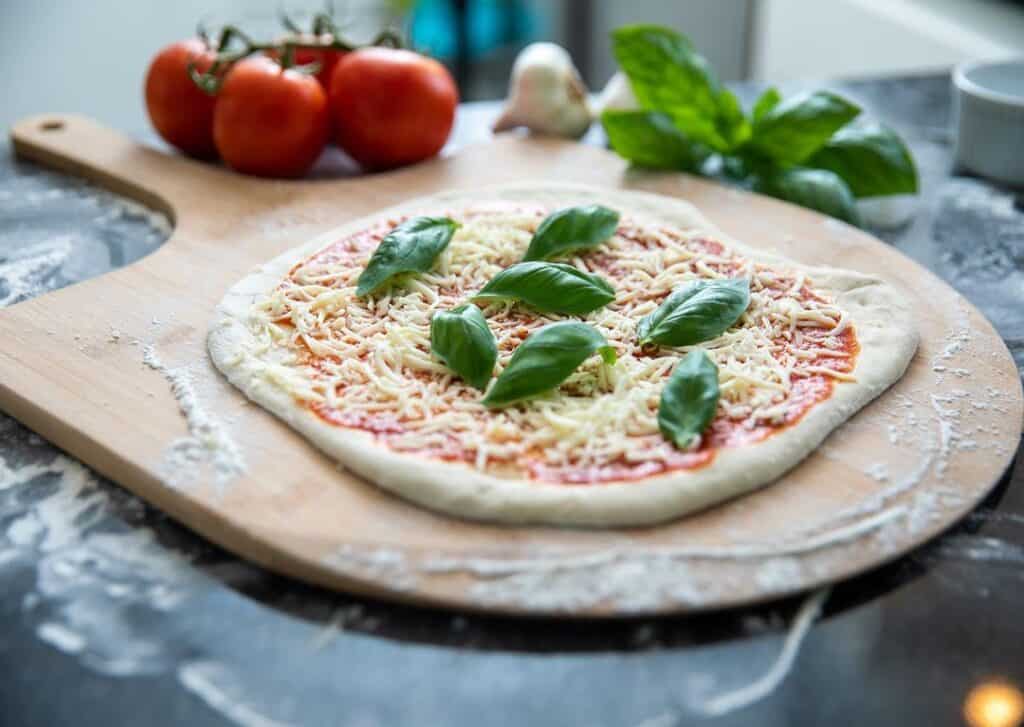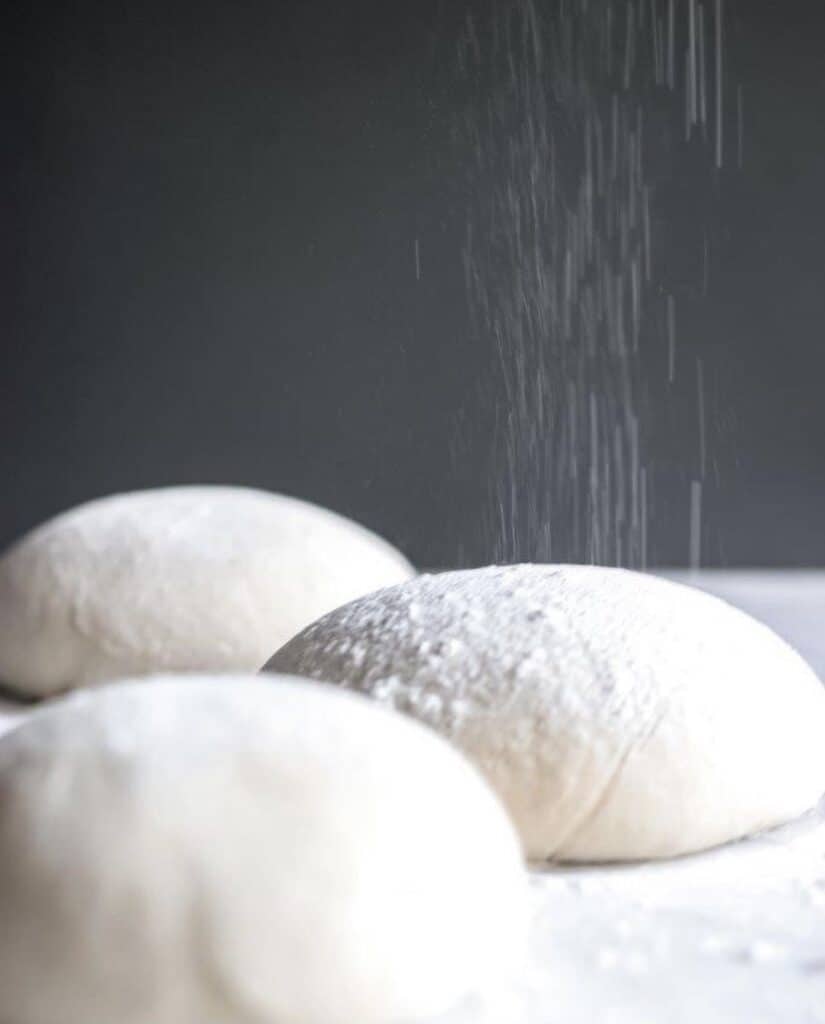So it’s come to this. You’ve made some brilliant dough, topped it off with some of the most delectable toppings known to humankind. Now you’ve pulled out your stone and you’re trying to take the pizza off, but it’s stuck like adhesive.
So why is the pizza stuck to a pizza stone? Your pizza is stuck to a pizza stone because your dough isn’t floured. A few ways to prevent your pizza from sticking include using plenty of flour on your dough and cooking surface as well as using slightly less water in your dough.

In this post, I’ll go over reasons why you may have sticky dough and ways to remedy it before, and even during, baking. Hopefully, this will help ensure getting your pizza off a stone won’t be as complicated as surgery.
If you’re looking for a new pizza stone, make sure to read my Traeger Pizza Stone review here.
What to Do if Your Dough is Stuck to Your Pizza Stone?
All dough, no matter what flour you’re using or how little water you include, is some varying degree of sticky. But there’s a difference between a little tacky and dough that sticks like silly putty.
Sticky dough isn’t always a bad thing, entirely. It can produce some incredibly soft, fragrant loaves or pizzas. When dough feels too sticky, novice bakers often make the mistake of adding more flour, thinking it would make the dough more firm and easier to handle.
This is a major mistake. If you’re kneading dough and finding it too sticky, adding more flour might actually make it stickier.
Having a lot of water in your dough is equally problematic. If the dough is too hydrated, it’ll stick to everything and make a mess. The best option is to just keep kneading, eventually the dough gets less sticky. There are some techniques in both kneading and prepping that can make it go more smoothly.
Preventing Sticky Dough

The first thing to know about dough, particularly when you’re using it for pizza, is that it should never be sticky by the time you’re ready to bake it. If it is, adding a little flour and cornmeal can help make it easier to work with, but it’s not a fix-all.
The second thing you’ll want to do is ensure that the dough is workable both on the counter and when you’re transferring it to the oven. For this, your best option is using a pizza peel. Lightly sprinkle the peel with flour to ensure easy transfer.
When it comes to handling dough before you’re ready to transfer it, there are a few things you can do to make it easier.
Start With Little Water
If water is going to make dough stickier, it stands to reason that using less is wise. Especially if you don’t have a lot of experience with baking, if you jump into doughs that have a high ratio of hydration, you’re going to be in over your head.
You want to start with doughs that have hydration content of about 60 – 65 percent. That should make it fairly easy to manage.
A LITTLE Extra Flour is Okay

Sprinkling or dusting the surfaces you’re working on is terrific when trying to prevent the dough from sticking. But it’s important to note that you should never do this while kneading. Only after you have the dough fully formed and you’re shaping it into a pizza pie is flour appropriate.
Use Two Dough Scrapers
Dough scrapers, or bench scrapers, are a terrific tool in the kitchen to quickly deal with potentially messy situations. And having two – one plastic and one metal – is a great way to shape your dough.
Dough scrapers are handy in forming the dough, they can be used during mixing the flour and they’re even handy when cleaning up.
Get The Technique Right
Whether baking is an art or a science is really a question of how you prefer to think of it. In my book, it perfectly incorporates elements from both fields. But, like any art, you’ll get better with practice. There’s a technique that you can develop in your own style that comes in handy in kneading that can make managing unruly dough easier.
It’ll be up to you to figure out what that is, as the only way to learn is through experimentation. But as you start to hone your baking skills, you’ll find it almost intuitive.
Start with low-hydration doughs, but after a while start on ones with higher water content. The more comfortable you are in your own kitchen, the better pizzas you’ll wind up producing.